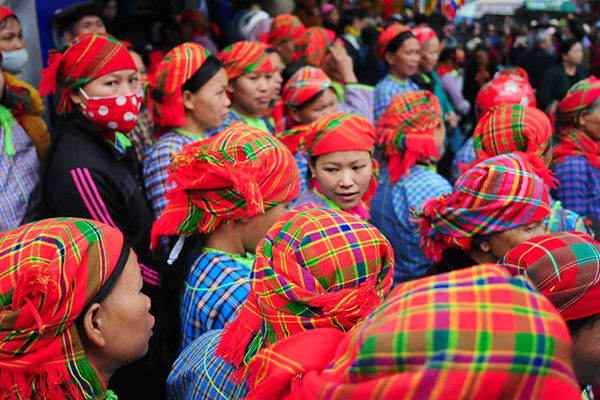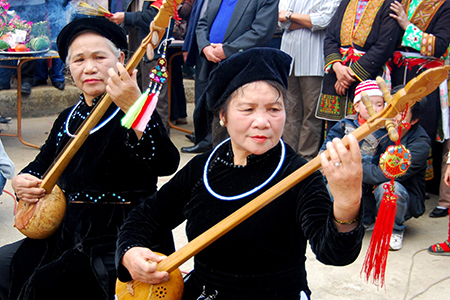On the eve of Tet Vietnam, the Lunar New Year, when the wish of all Vietnamese was to spend the holiday home with their families, I left Hanoi, I felt that a visit to That Khe, the Land of the Seven Springs, would amply justify such a sacrifice.
That Khe, with Dong Khe, Cao Bang and Lang Son, formed a string of four French garrison towns and along with Highway Four military posts which guarded the rugged northern border of Vietnam at the start of the First Indochina War (1946-1954). Our victory on Highway Four in the autumn of 1950, broke the French blockade and took the Vietnamese resistance from a purely defensive guerilla on to strategic counter-offensives in which the two sides fought more and more pitched battles. That victory heralded the campaign of Dien Bien Phu which took place four years later.
That Khe, where I was going, is located 200 kilometres north of Hanoi, in Lang Son province which was a remote and somewhat mysterious border area of the ancient kingdom of Vietnam. An old folksong sounded an enticing call:
"In Dong Dang, one may admire the picturesque
Ky Lua Street The rock in the likeness of To Thi waiting for her husband
And the pagoda of the Three Caves
O my sweetheart, come with me to Lang Son."
Lang Son was a place where lived a primitive man. In 1964, archaeologists discovered in the caves of Tham Hai, and Tham Khuyen (Binh Gia) some teeth of a man like ape dating back 400,000- 500,000 years. Numerous vestiges are evidence of a Neolithic culture about 10,000 years ago.
From Hanoi to the provincial capital of Lang Son. a distance of 154 kilometres, one travels along National Highway One, which leaves the Red River delta to penetrate into the Uplands with rolling earth hills before climbing to the Highlands, dominated by limestone peaks. At Kilometre 109 we stopped to have a look at the Chi Lang pass, the scene of bloody battles which sealed the fate of invading columns from the north, notably in the years 981 and 1427.

In this spring of 1994, the town of Lang San keeps but few traces of the last Sino-Vietnamese conflict in 1979. Like the townlet of Dong Dang 14 kilometres away, it has put on a new face because of the thriving cross-border trade which has grown with the market economy. Within a matter of a few years, its streets are overflowing with feverish activity and lined with insolently luxurious houses built by the nouveaux riches. Smuggling is rampant. In an out-of-the-way place, I saw Nung and Tay minority women crossing in Indian file a mountain pass carrying loads of Chinese beer produced in Nanning: those slender women of around 45 kilogrammes (90 pounds) transported, hanging from the ends of their shoulder poles, loads of 50 kilos and more! In another place, I was told that contraband Japanese cars were moved along a newly opened road.
The townlet of That Khe, 67 kilometres from Lang Son on High way Four, was left out of the tourist's circuit and little affected by the commercial fury. It had the worn-out took of a mountain district centre. The district, Trang Dinh, had a population of 52,800 in 1986 made up of people of the minorities Tay (44%), Nung (39.2%) and Dzao (7%) and of the Viet or Kinh majority (6%). That Khe (Seven Springs) owes its name to the seven forest streams that cross it besides three rivers. Its fields lying in a hollow, formerly a lake, are the rice bowl of the province. It is also famous for the plums and pears that grow in its orchards. Its forests, which cover three-quarters of its area, have been greatly damaged by the practice of slash-and-hurn cultivation. The indigenous Tay, probably related to the Viet, live in tow-lying areas and grow wet rice in submerged fields. The Nung, related to the Choang in neighbouring Chinese Kwangsi, came only 300 - 400 years ago. Being latecomers to the region they had to settle on hillsides and grow dry crops.
On the eve of Tet in That Khe, only elderly Tay and Nung people wore traditional indigo blue clothes. Young people sported T-shirts and jeans. At the end of the day, they no longer gathered in small groups to toss back and forth love songs, as their elders did in former times. However, at the market one could still enjoy roast duck and duck noodles, the region being renowned for the tasty flesh of the ducks it raises.
Our journey ended at Ang Mo (or Tan Tien), linked by a new 24 -kilometre road to That Khe. Here we visited a few households, two Dzao and one Tay. The Dzao were wasting away from opium smoking, but the Tay were rather prosperous from the products of hunting and gathering, food crop growing, and poultry raising. But the area as a whole was steeped in boredom. It is certainly a good thing that the Swedish- Vietnamese Fund for the Promotion of Culture has decided to give Ang Mo a wire-broadcast network of loudspeakers serving 300 households (about 1,800 members).



